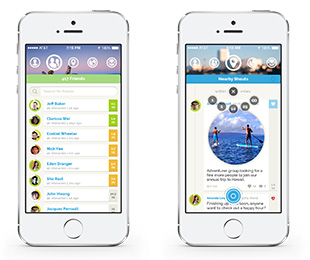Silicon Valley Leadership Group has released a new book, GameChangers 2014. If you’re simply too busy, or you’re part of the “Too Long; Didn’t Read” (tl;dr) crowd, here’s a sampling of some of the GameChangers’ thoughts that stand out:
Silicon Valley Leadership Group’s Carl Guardino:
There is something magical in this region and it has led to wave after wave of innovation. For our region to remain cutting-edge, we must break through in producing more game changers in the public sector. Silicon Valley’s success is all too often “in spite of,” rather than “in cooperation with,” the public sector. With the right outreach, this can change in 2014, and such partnerships can unleash even greater potential for the game changers throughout society that can make our region thrive.
Cisco’s John Chambers:
By 2020, we predict that 50 billion things will be connected to the Internet. As more and more things are connected, people’s lives will change for the better, productivity will improve, and new industries and ecosystems will create more jobs.
Along with great opportunity, the Internet of Everything will surely present technology, organizational, process, regulatory, cultural and other challenges. We need to address these issues head on and work to ensure that the privacy and security of individuals and organizations are protected.
SanDisk’s Sanjay Mehrotra:
[Our] nation’s educational foundation continues to weaken, and by neglecting this trend we are limiting our own futures. In fact, the greatest opportunities in the 21st century for young people are where we have faltered the most: in science, technology, engineering and math, also known as “STEM” fields. We have missed chances to arm tens of thousands of graduates with the critical STEM skills and experiences that we all need to successfully compete in a global economy.
View’s Rao Mulpuri:
Disruptive innovations can be brought to life at a rapid pace and large scale in industries such as infrastructure, if we develop highly impactful technologies and integrate them with proven building blocks.
House Democratic Leader Nancy Pelosi
America is a nation founded on faith – faith in the future, faith in America’s collective capacity to succeed, to innovate, to discover, to thrive. This faith has been the bedrock of the entrepreneurial spirit shared by every generation of Americans. That spirit formed the foundation of the explosive expansion and experimentation of Silicon Valley, which continues to revolutionize the way we do business, communicate and live.
Inside Straight Strategies’ Carl Pope
What Vinod Khosla calls “black swan” innovations – ones with low probability, high impact – don’t happen on their own. These game changers need supportive ecosystems, thoughtful regulations, innovative infrastructure, accessible and often patient finance. Society – and government – needs to facilitate and nurture the companion reforms that enable the new gizmos to scale.
AT&T’s Randall Stephenson
We’re always connected and always online. To a growing number of people, the idea of being tethered to a desktop computer or a stationary flat screen TV seems unthinkable. Put all of this together, and it’s clear that we are in a golden age of mobile innovation, driven by a powerful combination of networks, devices and applications. Our goal with all of this is to empower people and unleash innovation. Six years ago, no one would have imagined the United States would have more Internet-connected devices than people. Yet here we are, and the wave continues to build. So what will the next six years bring? One thing’s for sure: It will be beyond what our minds can imagine today.
Kaiser Permanente’s Bernard Tyson
The smart and mobile devices millions of Americans carry with them every day promise to let people take more control over managing their care as well as increase their connectedness with their health care providers. For much of the health care industry, that’s a new way of thinking – a game changer in itself that requires breaking down traditional silos in today’s disconnected delivery system. Breaking down silos is what Silicon Valley has done for decades, and why it is so important to rethinking health care.
San Francisco 49er’s Jed York
A smarter stadium was bound to happen. Levi’s Stadium will capture the best technology found in the Silicon Valley by allowing fans to create their own experience inside its friendly confines. Instead of focusing on hardware that will become obsolete over time, Levi’s Stadium will leverage the brilliant companies that create personal mobile devices for our customers. Levi’s Stadium will build off of a legacy of innovation founded in the Bay Area. No longer is “good enough” an option for live sports. Levi’s Stadium will change the game internationally, becoming the next innovation that began right here in the Bay Area.
Streetline’s Zia Yusuf
We’re just beginning to see the impacts of the connected city. It is smart grids that measure energy and water consumption. It is enabling building thermostats to learn temperature preference patterns, times and seasons to adjust automatically. It can detect and analyze the amount of pedestrians and drivers in city areas to improve economic vitality. It can combine this passerby data with other data – crime, pollution, or passerby emotions – to provide deeper analysis from multiple sensing devices so that cities and businesses can thrive. It’s on its way to a connected car that makes the driver smarter and safer – one that alerts about mechanical problems, reroutes around traffic and knows where an open parking spot is. The connected city may also someday automatically detect illness, such as West Nile Virus containing mosquitos; a small tumor; or drug-resistant bacteria on a subway.







